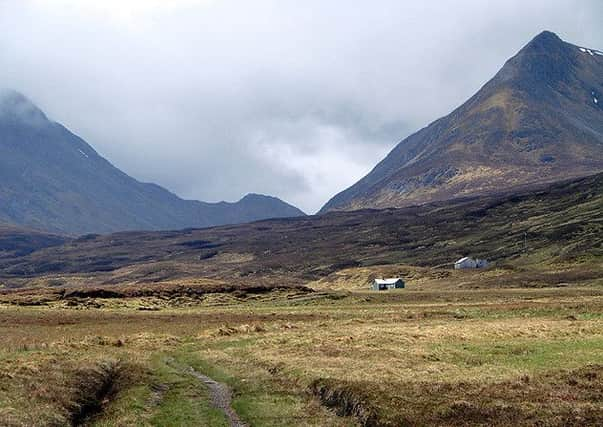The clan chief who hid in a cave for nine years


Ewen Macpherson of Cluny, also known as Cluny Macpherson, was one of Bonnie Prince Charlie’s most loyal supporters with Castle Cluny, at Laggan near Newtonmore, burned down by government troops following the 1746 battle.
Macpherson, who missed the battle after marking the passes at Badenoch with 600 men, became an outlaw.
Advertisement
Hide AdAdvertisement
Hide AdHe had several places of retreat on his estate, living for nine years chiefly in a cave close to his former home.
Such was his care of secrecy, not even his wife knew which hideaway he was in as he shifted from place to place.
High on an inaccessible cliff edge, his favoured sanctuary was dug out by his own people with the stones and rubble tipped into a loch at night to dodge detection of the soldiers who scoured the Highlands looking for their man.
Eighty soldiers had been dispatched to the area to find Macpherson, head of Clan Chattan, with Sir Hector Munro, lieutenant of the 34th Regiment, spending two years in Badenoch searching for the Jacobite.
However, the clan chief remained elusive s a Highland wall of silence shielded the clan chief.
An estimated 100 people knew the rough whereabouts of Macpherson but the Highlanders - despite the considerable reward on offer and the intimidation of tenants by government forces - stayed loyal.
An 1852 account of Macpherson’s hideouts is given in James Browne’s History of the Highlands and the Highland Clans.
Advertisement
Hide AdAdvertisement
Hide AdIt said: “In this sanctuary, he lived secure, occasionally visiting his friends at night or when time had slacked the rigour of the search .
“Though the soldiers were animated with the hope of the reward, and though a step of promotion to the officer should apprehend him was superadded, yet so true were his people, so strict to their promise of secrecy, and so dexterous in conveying to him the necessities he required in his long confinement, that not a trace of him could be discovered, nor an individual found base enough to give a hint to his detriment.”
An “unwearied diligence” of the clan may well have saved him, according to Browne.
At night, Macpherson, on occasion would leave is retreat to “vary the monotony of his existence” by spending a “few of the dark hours convivially with friends.”
In early September 1746, Cluny met with Bonnie Prince Charlie at a shieling called Uiskchibra, in Ben Alder - a “very bad and extremely smoky, miserable” shelter, where the prince stayed for two nights as he planned his exit from Scotland.
Then, Macpherson took him to “very extraordinary and romantic habitation” called the Cage which sat in the face of a “very rough, high and rocky mountain” called Letternilichk, also in Ben Alder.
The Cage sat in a small thick bush of wood. Trees were laid on the floor, arranged to compensate for the incline in the ground, and covered in earth and gravel. The trees overhead created a natural thatch with a space made for a chimney to flow.
Advertisement
Hide AdAdvertisement
Hide AdAccording to Browne, the Cage could contain six or seven people, with four regular stationed there - one usually playing cards, one keeping watch, one baking and another firing bread and cooking.
Charles left here on September 13 1746, travelling through the night to Borodale. He slept one night here before leaving from Loch Nan Uamh, six days after leaving Macpherson.
After bidding farewell to his leader, Cluny of Macpherson retreated to his hideaways once again.
Browne added; “Cluny himself became so cautious, while living the life of an outlaw, that, on parting with his wife, or his most attached friends, he never told them to which of his concealments he was going, or suffered any one to accompany him, thus enabling them, when questioned, to answer that they know not where he was.”
One account included in Browne tells of Cluny “wearied out with this dreary and hopeless state of existence” he escaped to France in 1755, where he later died in relative poverty.